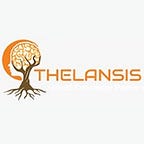Edwards Syndrome (Trisomy 18) — Market Outlook, Epidemiology, Competitive Landscape, and Market Forecast Report — 2022 To 2032
Edwards syndrome (Trisomy 18) is an autosomal chromosomal disorder characterized by an additional copy of chromosome 18. This condition is classified as one of the autosomal trisomy syndromes, with trisomy 21 being the most common. The occurrence of Edwards syndrome is primarily attributed to the presence of an extra copy of chromosome 18q. There are three distinct types of Edwards syndrome: complete trisomy 18, which accounts for approximately 94% of cases, mosaic trisomy 18, which constitutes less than 5%; and partial trisomy 18, which is responsible for 2% of cases. The risk of recurrence for complete trisomy 18 in subsequent pregnancies is estimated to be between 0.5% and 1%. The characteristic features of Edwards syndrome are believed to be associated with three copies of specific regions on the long arm of chromosome 18, specifically 18q12.1 to 18q21.2 and 18q22.3 to 18qter. Severe intellectual disability observed in individuals with Edwards syndrome may be linked to the trisomy of the 18q12.1 to 18q21.2 region. Notably, trisomy of the short arm of chromosome 18 (18p) does not seem to contribute significantly to the significant features of Edwards syndrome. Currently, there is no definitive treatment available for Edwards syndrome. Approximately 40% of affected fetuses do not survive labor, and about one-third of the surviving fetuses are born prematurely. The median survival time for individuals with Edwards syndrome ranges from 3 days to 14.5 days. The survival rates are approximately 60% to 75% at the end of the first week, 20% to 40% at the end of the first month, and 10% at the end of the first year. Only 5% to 10% of individuals with Edwards syndrome survive beyond their first year.
· The incidence of Edwards syndrome is 0.3 per 1000 live births, and females are affected more often than males (3:1).
Thelansis’s “Edwards Syndrome (Trisomy 18) Market Outlook, Epidemiology, Competitive Landscape, and Market Forecast Report — 2022 To 2032” covers disease overview, epidemiology, drug utilization, prescription share analysis, competitive landscape, clinical practice, regulatory landscape, patient share, market uptake, market forecast, and key market insights under the potential Edwards Syndrome (Trisomy 18) treatment modalities options for eight major markets (USA, Germany, France, Italy, Spain, UK, Japan, and China).
KOLs insights of Edwards Syndrome (Trisomy 18) across 8 MM market from the centre of Excellence/ Public/ Private hospitals participated in the study. Insights around current treatment landscape, epidemiology, clinical characteristics, future treatment paradigm, and Unmet needs.
Edwards Syndrome (Trisomy 18) Market Forecast Patient Based Forecast Model (MS. Excel Based Automated Dashboard), which Data Inputs with sourcing, Market Event, and Product Event, Country specific Forecast Model, Market uptake and patient share uptake, Attribute Analysis, Analog Analysis, Disease burden, and pricing scenario, Summary, and Insights.
Thelansis Competitive Intelligence (CI) practice has been established based on a deep understanding of the pharma/biotech business environment to provide an optimized support system to all levels of the decision-making process. It enables business leaders in forward-thinking and proactive decision-making. Thelansis supports scientific and commercial teams in seamless CI support by creating an AI/ ML-based technology-driven platform that manages the data flow from primary and secondary sources.
